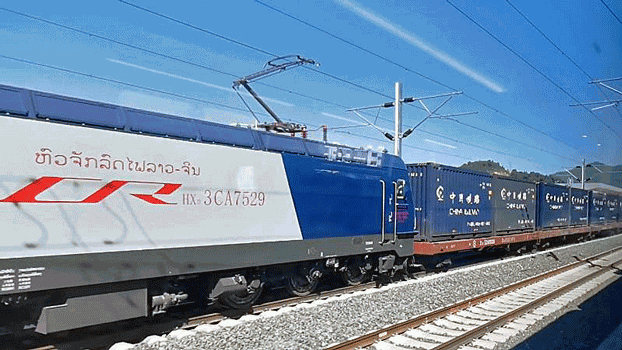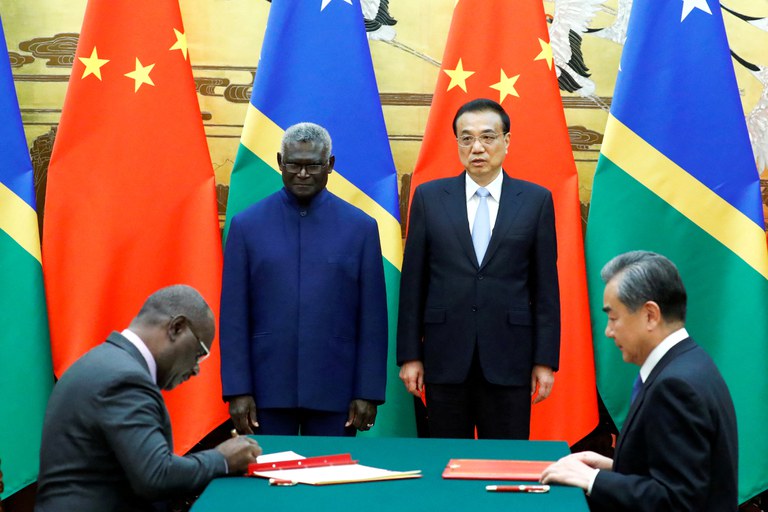
Kim Jong Un hints he might use nukes as more than deterrent
North Korean leader Kim Jong Un on Monday vowed to boost his nuclear weapons program and said the weapons could be used “in any situations of warfare” as he observed a massive military parade that showed off Pyongyang’s intercontinental ballistic missiles (ICBMs), state media reported. Kim Jong Un emphasized the need to strengthen the North Korea’s military capabilities, with an emphasis on nuclear development, in a speech before the parade that analysts in Seoul and Washington said were troubling. “In particular, the nuclear forces, the symbol of our national strength and the core of our military power, should be strengthened in terms of both quality and scale, so that they can perform nuclear combat capabilities in any situations of warfare, according to purposes and missions of different operations and by various means,” the state-run Korea Central News Agency reported him as saying. The event commemorated the 90th anniversary of the founding of the Korean People’s Revolutionary Army (KPRA), which under the country’s founder, Kim Il Sung, waged guerilla attacks against the Japanese army in and around the Korean peninsula. The elder Kim is Kim Jong Un’s grandfather. Pyongyang has been actively testing short and long-range missiles to display its military power, with a more conservative administration about to take over the government in South Korea and talks with the U.S. over denuclearization stalled. Officials in Washington and Seoul have said that activity at North Korea’s nuclear testing site may indicate that Pyongyang is preparing to resume tests there. Kim said in the speech that the purpose of Pyongyang’s nuclear arsenal is to deter attacks, but also suggested that the weapons could be used for other purposes. “Our nukes can never be confined to the single mission of war deterrent even at a time when a situation we are not desirous of at all is created on this land,” Kim said. “If any forces try to violate the fundamental interests of our state, our nuclear forces will have to decisively accomplish its unexpected second mission.” The parade included the country’s largest known ICBM, the Hwasong-17, which Pyongyang claims to have successfully tested last month. South Korean officials have said that the Hwasong-17 exploded prematurely during the test and North Korea tested a less-advanced missile a few days later, claiming it was the Hwasong-17. State media made a point of showing Kim shaking hands with military officials as the Hwasong-17 rolled by them. People at a train station in Seoul, South Korea watch a TV screen showing a news program reporting about North Korea’s military parade, Tuesday, April 26, 2022. Photo: AP De-escalation urged Officials in South Korea urged the North to stop raising tensions on the peninsula. “The South Korean government, above all else, urges North Korea to immediately stop any actions that cause tensions on the Korean peninsula and in the region,” South Korea’s Foreign Ministry spokesperson Choi Young-sam said. The presidential transition committee for South Korean President-elect Yoon Seok-yeol, who will assume office on May 10, said in a statement that close cooperation with the U.S. was necessary to deter North Korean threats. South Korean analysts said that Kim’s words signified a significant shift regarding North Korea’s nuclear ambitions. “North Korea’s supreme leader has explicitly stated that [nuclear weapons] are no longer a means of self-defense, but they are now for attack,” Kwak Gil Sup of Kookmin University in Seoul told RFA’s Korean Service. This increases the likelihood that North Korea would attempt to use nuclear weapons to resolve crises, Cho Han Bum of the Seoul-based Korea Institute of National Unification told RFA. “By significantly expanding the scope of the use of nuclear weapons, it is possible to use nuclear weapons in such attempts as regime crises, internal crises and regime changes,” said Cho. Analysts in the U.S. meanwhile expressed doubts that the Hwasong-17 in the parade was real, but agreed that Kim Jong Un’s comments about his nuclear ambitions were troubling. “What we see in the parade may only be a mockup, [and] may not be a real missile, either,” David Maxwell, a former Army officer and now a senior fellow at the Washington-based Foundation for Defense of Democracies, told RFA. “I think it’s safe to say that Kim Jong Un is trying to show us advanced military capabilities, which on the one hand support his political warfare strategy and blackmail diplomacy to raise tensions to make threats. And they use these provocations to gain political and economic concessions,” Maxwell said. Bruce W. Bennett, a counterproliferation expert at the RAND Corporation, told RFA that Kim Jong Un’s comments about nuclear weapons were “worrisome.” “He’s trying to be scary and make it look like he’s capable. And then he says, ‘Hey, guys, bother me, and I’ll use nuclear weapons.’ You know, it’s a threat,” he said. “And especially given that he’s facing internal instability, [it] does make us wonder where things are going on the peninsula.” People at a train station in Seoul, South Korea watch a TV screen showing a news program reporting about North Korea’s military parade, Tuesday, April 26, 2022. Photo: AP The General Political Bureau of the People’s Army used the occasion of the 90th anniversary of the KPRA’s founding to issue a directive to soldiers that they have the responsibility of “protecting the system as the military of the supreme leader,” a military source in the northeastern province of North Hamgyong told RFA’s Korean Service Monday on condition of anonymity for security reasons. But the source said that there was discontent brewing among the troops. “The soldiers and even military officials criticize their leaders for designating them as a ‘spearhead’ for protection of the [current political system], without treating them accordingly. … [The order] emphasizes protecting the system but does not say anything about improving the military supply situation, so many soldiers scoff at the directive,” the military source said. In North Pyongan province, in the northwest, another military source told RFA the directive included instructions to boost troop morale. “The [recent] test…





